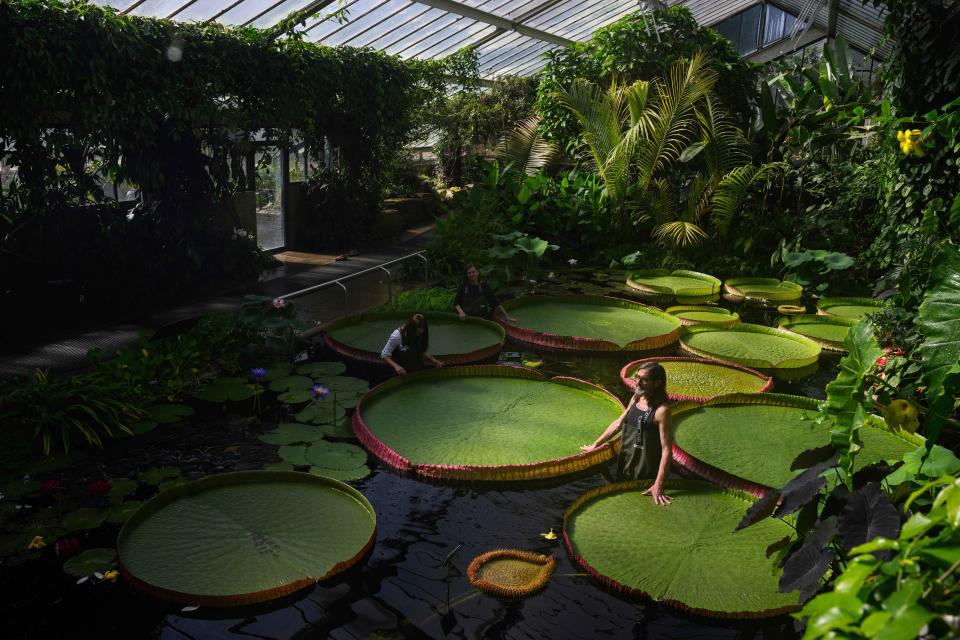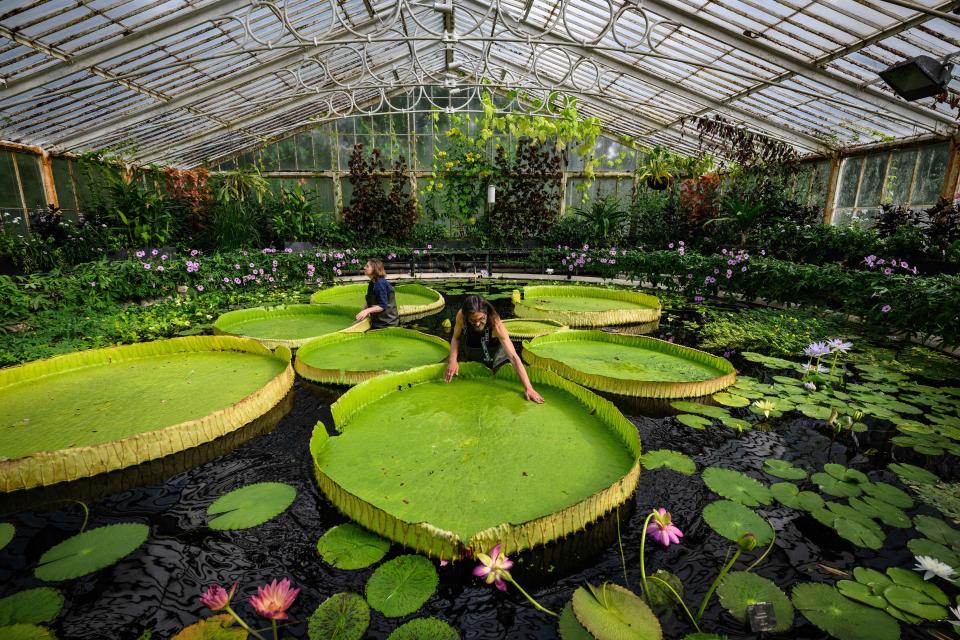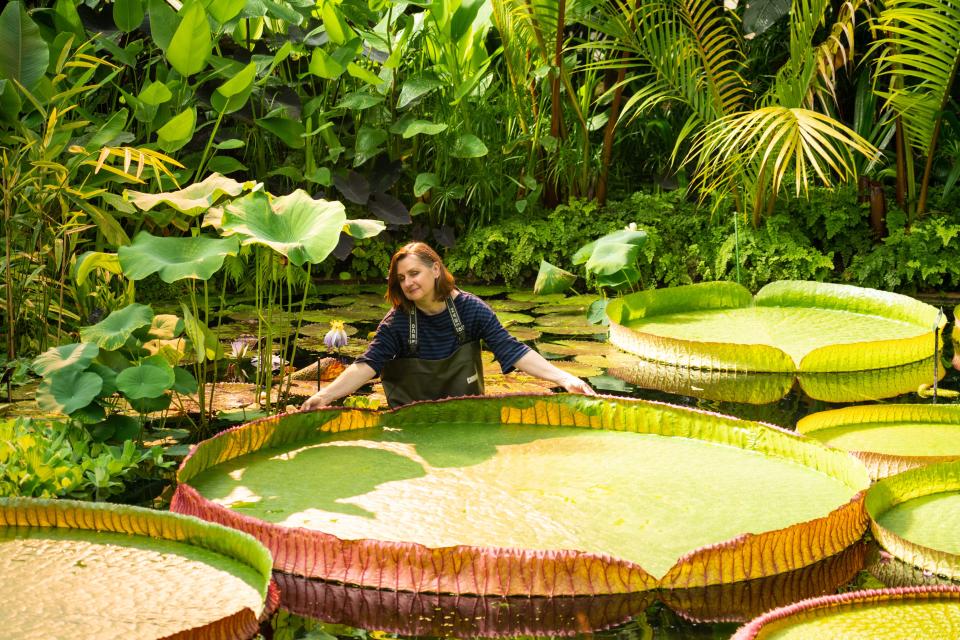Scientists discover a new giant waterlily that was hiding in plain sight for 177 years
The largest waterlily species in the world has been discovered after a case of mistaken identity that saw it hide in plain sight for 177 years.
A team of scientists from the Royal Botanic Gardens at Kew in London revealed the finding in a study published Monday in the journal Frontiers in Plant Science, with the species of the aquatic plant named as new to science.
With leaves that can grow up to 10 feet wide and carry the distributed weight of a full-grown man, it may seem like a hard plant to overlook. But due to a lack of existing research on giant waterlilies, it took the team years of investigation to establish that a previously unidentified species had been living in Kew's herbarium all along.

Giant waterlily specimens were first brought to the U.K. from Bolivia and were coined genus Victoria after Queen Victoria in 1852. Scientists initially believed there were only two subspecies of giant lily pads, the Victoria amazonica and Victoria cruziana. But it’s now clear that specimens from at least one more species made the voyage from South America to Kew in west London.
With this case of mistaken identity sorted, experts say they can more accurately document waterlily diversity and protect and sustainably benefit from them.
“In the face of a fast rate of biodiversity loss, describing new species is a task of fundamental importance,” said Alex Monro, research leader in the Americas, who added that he hopes his team’s research will inspire other scientists who are seeking to identify new species.
The latest addition to the lily pad family has been named Victoria boliviana in honor of the research team’s Bolivian partners and after one of the South American homes of the giant waterlily.

Horticulturist Carlos Magdalena, a world expert on waterlilies and the research team leader, suspected for years that this third species existed. He got a chance to prove his suspicions when he received a collection of giant waterlily seeds from the Bolivian institutions Santa Cruz de La Sierra Botanic Garden and La Rinconada Gardens in 2016.
As Magdalena germinated and grew the seeds back at Kew, watching the waterlily grow side by side with the other two Victoria species, he knew he had found something unique.
Lucy Smith, a botanical artist with experience working with lily pads, was brought on to draw illustrations of Magdalena’s various lily pad species.
As she illustrated the giant lilies, documenting flowers that can grow larger than a soccer ball, change between white and pink, and only open up at night, Smith told NBC News she began to recognize the unique distinctions of the V. boliviana, whose leaves are so large they can be seen through satellite imagery, according to Smith.

The fact that it’s taken so long to properly identify the plant highlights how much more work needs to be done, she said.
“I help scientists describe new species every year, and they’re not all as big and charismatic as this new species of Victoria, but they all matter. Every single plant in an ecosystem has an important role to play,” she said.
“Perhaps we can use the most giant and charismatic plants to highlight the fact that there are many plant species out there still not known to science and not understood.”

